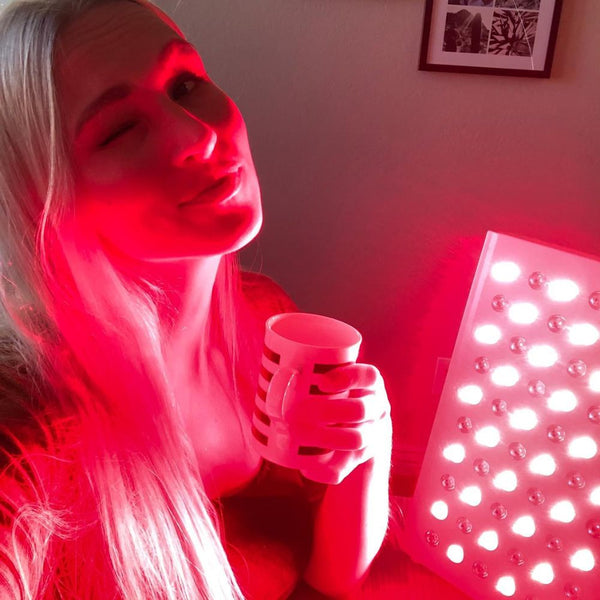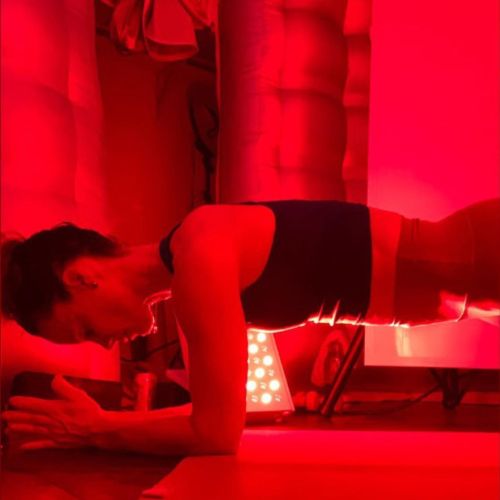
Understand the Side Effects of Red Light Therapy
Understand the Side Effects of Red Light Therapy
Red Light Therapy (RLT) has gained immense popularity for its potential health and wellness benefits, from skin rejuvenation to pain relief. This non-invasive treatment promises much, but like any therapy, it’s essential to understand its possible side effects.
Many who are curious about RLT wonder if it’s safe and how it may impact them. This blog dives deep into the possible side effects of red light therapy, answering frequently asked questions and providing clarity on how to approach this therapy for maximum benefits with minimal risks.
What is Red Light Therapy?
Red light therapy is a treatment that uses low-level wavelengths of red light to penetrate the skin, targeting cells for various therapeutic benefits. It is commonly used to improve skin health, promote wound healing, reduce inflammation, and even enhance mental clarity.
By stimulating cellular activity, RLT has been found to boost collagen production, reduce wrinkles, and promote overall skin health.
5 Potential Side Effects of Red Light Therapy
1. Mild Skin Sensitivity
One of the most common side effects reported is mild skin sensitivity, especially after the initial few sessions. This might manifest as slight redness or warmth in the treated area. Such reactions are generally temporary and subside on their own. For those with sensitive skin, it's advisable to start with shorter sessions.
2. Eye Strain and Light Sensitivity
Although red light therapy devices often include eye protection, prolonged exposure to red and near-infrared light can cause eye strain and increased sensitivity to light. It is crucial to wear protective eyewear, especially if using high-intensity RLT devices. Using red light near the eyes without protection may lead to discomfort or light sensitivity.
3. Temporary Fatigue
Some users have reported feeling tired or experiencing mild headaches after sessions. This may be due to the energy demand on the body’s cells as they respond to the treatment. In many cases, fatigue lessens as the body adjusts to the therapy.
4. Irritation on Pre-Existing Conditions
Individuals with certain pre-existing conditions like photosensitivity disorders or autoimmune diseases should approach red light therapy cautiously. RLT may exacerbate certain conditions, and it's always best to consult a healthcare provider before beginning therapy.
5. Increased Warmth in Treated Areas
As red light therapy stimulates cellular activity, it’s natural to feel warmth in the treated areas. However, if the warmth turns to discomfort or heat, it’s recommended to stop the session immediately and consult a professional before resuming.
5 Commonly Asked Questions about Red Light Therapy Side Effects
1. Is Red Light Therapy Safe for Daily Use?
Yes, red light therapy is generally safe for daily use. However, daily exposure may not be necessary for everyone, and it’s wise to start with shorter sessions. Gradually increasing session time can help the body adapt without overwhelming cellular processes.
2. Can Red Light Therapy Cause Skin Burns?
Red light therapy typically uses low-level light, which doesn’t emit significant heat. Burns are rare and typically occur if the device is used incorrectly or for excessively long sessions. Following the manufacturer’s guidelines can prevent such risks.
3. Are There Any Long-Term Side Effects?
Current research does not indicate severe long-term side effects from red light therapy. However, studies on long-term exposure are still emerging, so it’s essential to use RLT responsibly, avoiding overuse and ensuring adequate breaks between sessions.
4. Who Should Avoid Red Light Therapy?
Individuals with photosensitive conditions, pregnant women, and those taking medications that increase light sensitivity should consult a healthcare professional before starting red light therapy. Although RLT is non-invasive, certain health conditions may respond unpredictably to the treatment.
5. How Can I Minimize Side Effects?
To reduce side effects, start with lower intensity settings and shorter durations, gradually building up as your body adapts. Always wear eye protection and consider consulting with a healthcare provider to tailor the therapy to your unique needs.
5 Tips for Safe and Effective Red Light Therapy
1. Follow Recommended Guidelines
Each red light therapy device comes with specific guidelines regarding duration, distance, and frequency. Adhering to these guidelines can help prevent overuse and minimize risks.
2. Wear Protective Eyewear
Avoiding eye strain is crucial. Protective eyewear is usually provided with most devices, but if not, invest in a pair of quality goggles to shield your eyes from intense light exposure.
3. Limit Session Duration
For beginners, it’s advisable to start with 5-10 minute sessions. With consistent use, you can gradually increase the duration. Avoid sessions longer than 20 minutes unless advised by a professional.
4. Check Skin Sensitivity
Some people experience sensitivity after their first few treatments. Conduct a skin sensitivity test by applying red light to a small patch of skin for a few minutes and monitor for any adverse reactions.
5. Consult with a Healthcare Provider
If you have pre-existing health conditions or are on medication that increases light sensitivity, consult with a doctor before starting red light therapy.
Conclusion
Red light therapy is widely regarded as safe, but like all treatments, it can come with minor side effects. Awareness and proactive measures can help you maximize the benefits while minimizing potential risks.
Most side effects are mild and temporary, making red light therapy a suitable option for many seeking non-invasive health improvements.
Following best practices, consulting with healthcare providers, and using the therapy responsibly can enhance your experience, ensuring that you enjoy the full range of benefits red light therapy offers.



